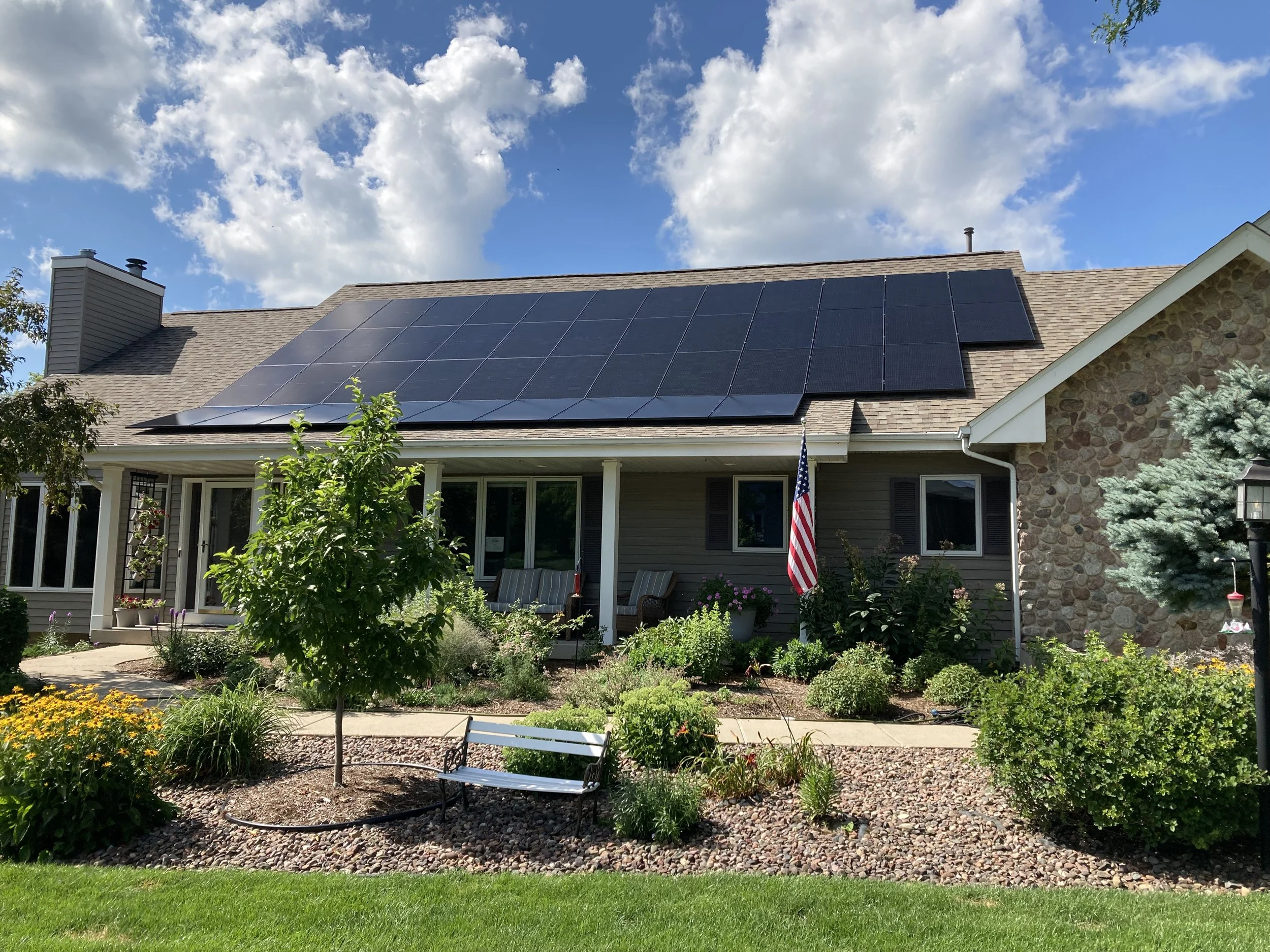The 2022 Inflation Reduction Act (IRA) provided federal programs makes going solar more affordable and provides incentives to help homeowners electrify and increase the energy efficiency of their home.
Here is a breakdown of some of the provisions and incentives in the bill:
Some provisions in the Inflation Reduction Act have specific provisions about household income to qualify, how much can be claimed each year, etc. If you are in a low- or moderate-income household, you may qualify for significantly more funding than what is listed below to increase the efficiency of your home. To find out just how much you qualify for based on your location, income, and household size, see Rewiring America’s Saving Calculator here.
Residential Solar
The Inflation Reduction Act extends federal tax incentives for going solar. Households can receive a tax credit for 30% of the cost of adding solar to their home from now through 2032. There are no income limits or caps for this incentive, so regardless of how large of a system you need or your household income, you will qualify for a 30% federal tax credit when going solar.
Electric Vehicles
The Clean Vehicle credit gives $7,500 credit for new electric vehicles and a $4,000 credit for used electric vehicles. You can read more about why it’s great to plan ahead for any future electric vehicles when going solar on our website here.
Electric Heating and Cooling
The Energy Efficient Home Improvement Credit gives households a 30% tax credit for the cost of installing a heat pump water heater or heat pump for home heating and cooling, up to $2000. (Read more about heat pumps here.) The credit also includes up to $600 for highly efficient central air conditioners, electric water heaters, and electric furnaces that meet or exceed the highest energy efficiency tier as set by the Consortium for Energy Efficiency.
Stoves and Dryers
Choosing a new stove or dryer? The Inflation Reduction Act also includes up to $840 for induction stoves and ovens and heat-pump dryers. Learn more about your eligibility here.
Main Panel Upgrades
When switching over to electric heating, electric vehicles, or installing a rooftop solar array, your home may need a new main electrical panel to handle all the incoming and outgoing electricity. You can receive a 30% tax credit if you install a new main panel alongside solar or geothermal heating and up to a $600 tax credit if you install a new main panel alongside a heat pump or heat pump water heater. See details here.
When looking into going solar, it is helpful to consider if you plan on taking advantage of any of the other incentives in the next few years. We can size your system to produce for a future electric vehicle, install an EV charger at the same time we install your solar array, or oversize your system to produce the electricity needed for future electric appliances, heat pumps, or mini splits.
By switching your home and vehicles to electric power, and then adding a rooftop solar array, you will not only save money over the long run, but you will also power your home and vehicles with renewable energy. And, with the new federal incentives, making the switch may be more affordable than you thought.
Disclaimer: we are not tax experts and cannot guarantee incentives or eligibility. We encourage you to talk to a tax professional before making any major decisions.
Additional Resources:
Rewiring America Inflation Reduction Act Guide for Homeowners
Federal Government Info on the Inflation Reduction Act for Homeowners
Dane County Climate Action- Taking Advantage of the IRA
Electrify Now- Resources on electrifying your home, vehicle, and power source
This Guide Can Help You Save Money and Fight Climate Change- NYTs

